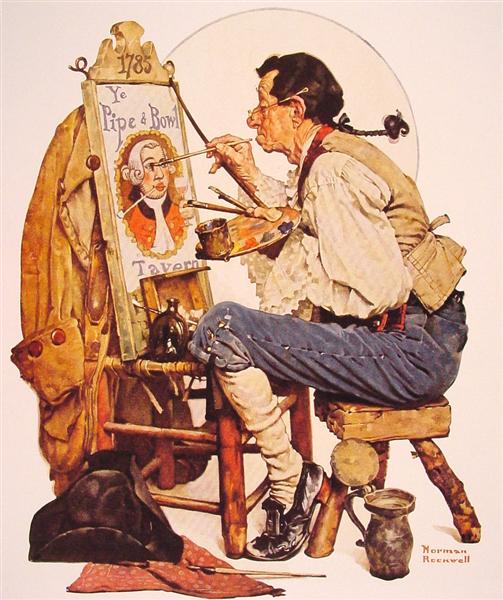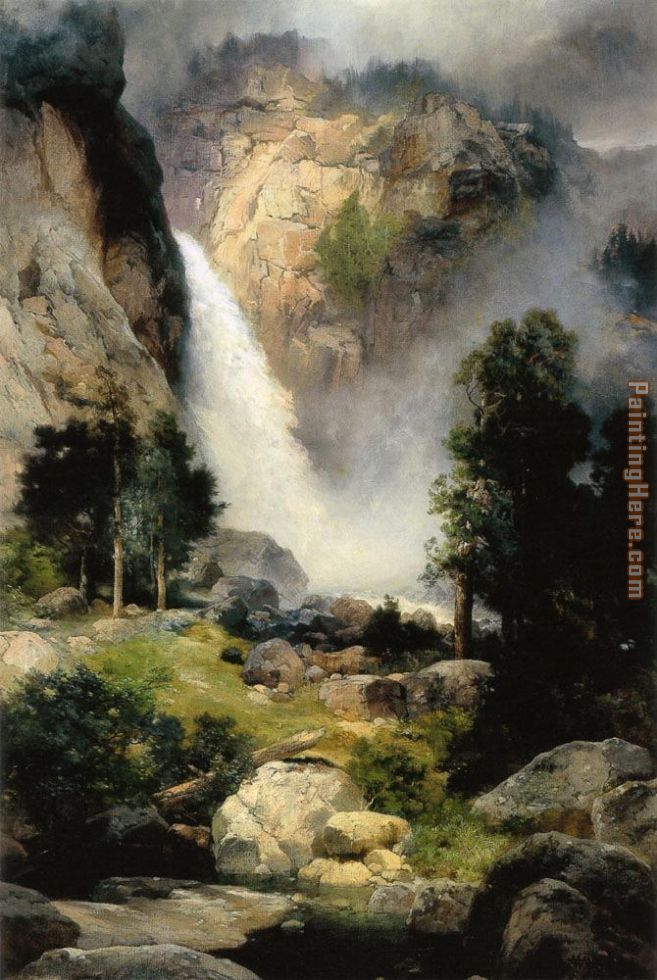Sotheby’s New York 21 November auction of American Art . The sale is headlined by Norman Rockwell’s Saturday Evening Post cover, Which One? .The fall sale also includes strong examples of modernism by artists including Milton Avery and Charles Ephraim Burchfield, as well as Western art, which is well represented by Albert Bierstadt’s stunning Yosemite and four paintings formerly in the collection of Philadelphia sports owner and legend, Edward M. Snider. Following an exhibition in San Francisco and with several highlights on view during the Impressionist & Modern and Contemporary Art sale previews in New York, the full offerings of American Art will open to the public on 19 November.
Norman Rockwell’s Which One? (Undecided; Man in Voting Booth) will be a major highlight of our 21 November 2016 auction of American Art in New York. Depicting the public sentiment leading up to the presidential election of 1944 , in which President Franklin Delano Roosevelt ran against Thomas E. Dewey, this painting epitomizes Rockwell’s signature style , combining relatability and intellect, humour and all -American pride.
Acquired by the Phipps Family in the1980s , the painting will be exhibited in New York starting 4 November 2016 alongside Impressionist, Modern & Contemporary Art, before the American Art auction on 21 November, when it is estimated to sell for $4/6 million .
1944: AN ELECTION YEAR
Focused on the United States presidential election of 1944, a hotly -contested race between Democratic President Franklin Delano Roosevelt, running for his fourth term, and Republican Thomas E. Dewey, governor of New York, Which One? is a superb example of Norman Rockwell’s ability to highlight issues at the forefront of national discourse in a relatable manner. With questions of foreign and domestic policy, as well as the general health of the incumbent, being called into question, Americans rallied to vote, taking part in an essential, American experience. In Which One? a Cedar Rapids resident represents the millions of undecided voters across the country. Having educated himself with political pamphlets and newspapers, the former jammed in his pocket and the latter still grasped in his hand, the voter continues to weigh his options. While the image alone would have resonated with citizens throughout the United States, Norman Rockwell’s keen attention to detail, demonstrated by the fine print of The Cedar Rapids Gazette and the man’s bemused expression , bring s this undecided voter to life.
Furthermore, by balancing the composition and creating a sense of depth, one feels that he or she could step into the painting and into the shoes of the Cedar Rapids voter. Which One? (Undecided; Man in Voting Booth) embodies the best of Norman Rockwell and his ability to capture American life. Having been in the same collection for over three decades, the November auction of American Art offers a rare opportunity for collectors and institutions to acquire a quintessential work by one of America’s most beloved painters of the 20th Century.
NORMAN ROCKWELL: AMERICA’S STORYTELLER
Norman Rockwell was, and continues to be, America’s storyteller. Best known for his covers for The Saturday Evening Post, his works of art captured the zeitgeist of the day, including patriotism, racism and national security. In fact, with the public’s reliance on daily newspapers and weekly magazines like The Post for information and regular updates, his paintings were an integral part of the conversation. Capturing them with warmth, w it and a sense of humor, Norman Rockwell appealed to the average American. In the words of Thomas S. Buechner, “because [Rockwell] illustrates them using familiar people in familiar setting with wonderful accuracy, he continue to grow as new generations live through the same quintessentially American types of experiences that he so faithfully depicted in his art” (Norman Rockwell: A Sixty Year Retrospective, New York, 1972, p. 13).
Additional significant Rockwells on offer this November include
Pipe and Bowl Sign Painter (estimate $1.5/2.5 million )
and Organist Waiting for Cue (estimate $1.2/1.8 million) ,
both strong examples of the artist’s work for The Post in the 1920s. Remarkably, the former was the first image to appear on the cover of the publication in full color.
A critical period in Milton Avery’s career is represented by two works painted in the 1940s when the artist developed his mature style.
Woman and Orange Mandolin (estimate $800,000/1,200,000) from 1947 and sold by the Estate of Maxine Pines also exemplifies the artist’s distinctive brand of modernism. Encouraged by his new French art dealer, Paul Rosenberg, Avery continued to simplify forms and increase his reliance on color to organize space and express mood, helping to position the artist as one of the earliest American practitioners of chromatic abstraction.
Six works by the celebrated American watercolorist Charles Ephraim Burchfield are also included in the American Art sale. Spanning nearly 50 years of Burchfield’s career from 1915 to 1963, many of these works have been off the market for two decades. Leading the group is
September Wind (estimate $300/500,000). A testament to the artist’s deep reverence for the natural world, this vibrant and dynamic watercolor from 1963 emphasizes the ephemeral beauty of the changing seasons.
Western selections in the November auction are highlighted by Albert Bierstadt’s Yosemite (estimate $1.5/2.5 million ), a stunning depiction of the territory that, at the time this work was painted, was largely unexplored. Yosemite also includes a rare self - portrait of the artist and was likely previously owned by the Commanding General of the Union Army and former United States President, Ulysses S. Grant.
Painted in 1905, Thomas Moran’s Cascade Falls is a dynamic view of one of the Yosemite Valley’s most dramatic waterfalls, which the artist first encountered in 1871 while traveling on a commission for Scribner’s magazine (estimate $800/1,200,000) .






